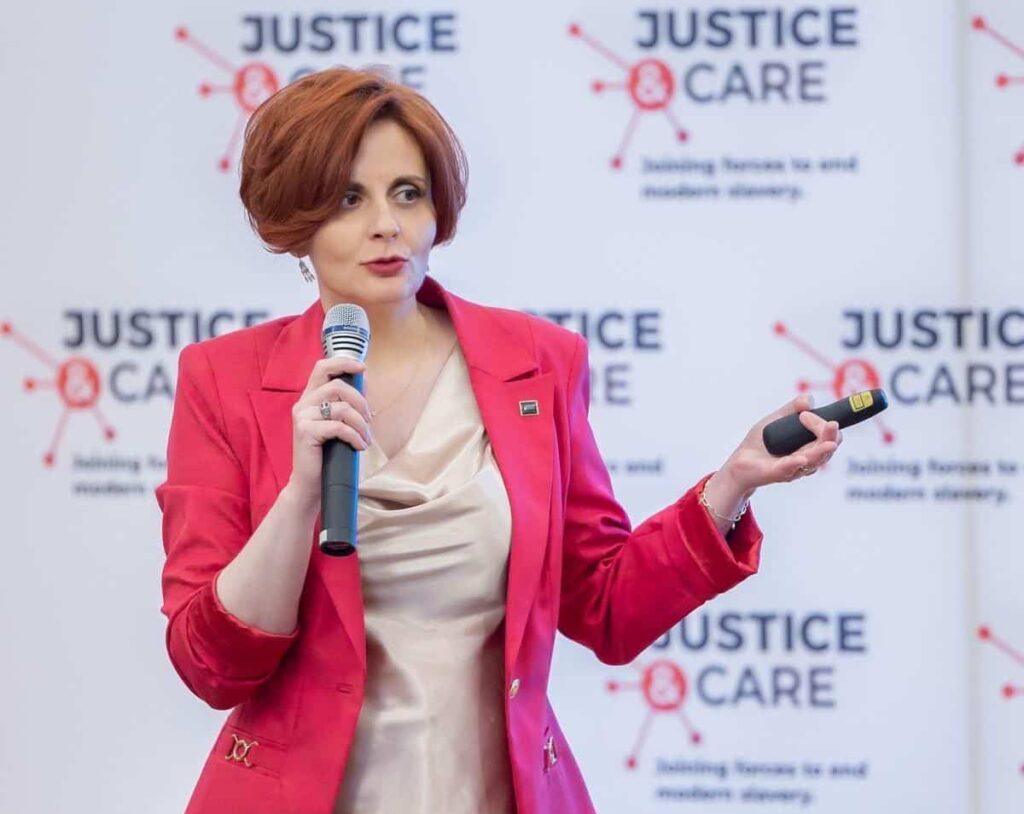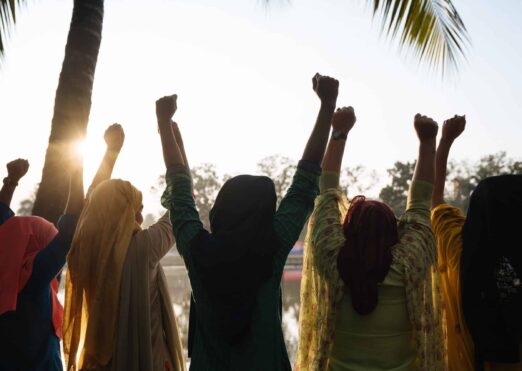Parents looking the other way as children are trafficked, research suggests
June 25, 2024
The bleak reality of child trafficking in Romania has been exposed in new research from Justice and Care and presented at an international conference at the Parliament of Romania.
The findings suggest that the pillars that are supposed to protect children, like family, community and local authorities, are often failing – and are sometimes even directly involved in their recruitment or exploitation.
While not in extreme poverty, the typical victim often has parents who look the other way while they are exploited because they need money, the study indicates.
Approximately 50% of all victims of human trafficking in Romania are children, while more than 90% of sexually exploited child victims are girls and come from rural areas, official figures from the Romanian Government show.
The same data claims a total of 1,525 children have become victims of human trafficking in Romania in the last five years, although the real number is thought to be significantly higher.
Despite this, child trafficking in Romania is an under-researched issue. In response to the new findings, Justice and Care has launched the Romanian Anti Child Trafficking Initiative, a group that will map out the phenomenon further. The team will identify how child trafficking can be prevented and how the current response can be adapted to better support child victims.
Our Romanian team’s new research was discussed at an event in Bucharest on Tuesday, named Child Trafficking in Romania: Hidden Chains and Missing Links – organised by Justice and Care Romania in partnership with the Presidency of the Romanian Senate.
Attendees included representatives from the Romanian Government, the National Authority for Child Protection, the Chief Prosecutor (DIICOT), Prime Minister’s Chancellery, the National Agency against Trafficking in Persons.


Profiling the typical child victim in Romania, our research found that she is normally a girl aged 14 to 15 who comes from a family with a low standard of living, but not necessarily extreme poverty.
The child themselves can typically distinguish between good and bad, but does not have enough autonomy to oppose risks and self-harming behaviors, which generates their inability to self-identify as a victim. Many of the children drop out of school at the time they are recruited by traffickers.
Contrary to previous assessments, the vast majority of trafficked children do not come from families where the parents have gone abroad and they are not in the child protection system, the study found.
Tragically, it suggested that the prospect of children earning income often leads the family to accept exploitation and trafficking.
Meanwhile, the children normally do not have any form of direct community or institutional support nearby, and if they do trust in local authorities is low due to administrative incapacity and lack of response.
It is predicted that the prevalence of online recruitment and exploitation will rocket in coming years due to wider access to digital technology.
Our research was carried out between December 2023 and June 2024 with the support of a research team from the University of Greenwich, Old Royal Naval College.
Commenting on her team’s work, Madalina Turza, Country Director for Justice and Care Romania, said: ‘Child trafficking is an alarming phenomenon in Romania and globally. That is precisely why we believe that a distinct and specific approach is necessary in the case of children.
‘All the more since child trafficking correlates with drug use and other types of crime. This is the reason why we tried to understand the causes and the context in which our children fall into the hands of traffickers.
‘We believe that it is better to prevent such terrible things from happening in the first place than to try to recover children from experiences that will fundamentally mark their lives. How can you fight this phenomenon, if you do not understand what is happening in the lives of these children?’
Nicolae Ciucă, President of the Romanian Senate said: ‘The figures show that almost every day we lose a child to traffickers, which is unacceptable. The fight against child trafficking can be won. It is very clear who we are fighting for, with whom we are fighting and against whom we are fighting.
‘As the phenomenon of child trafficking is evolving, a continuous framework of multi-sectoral cooperation is necessary, in which analysis generates solutions and interventions adapted to the realities these children face.
‘I thank Justice and Care and Ms. Turza for this initiative and invite you to join forces, be leaders and build a team of teams! For the children.’


